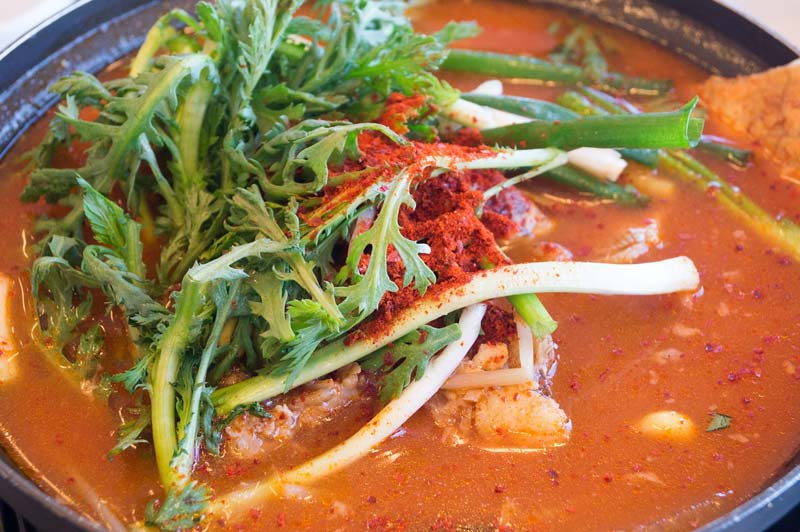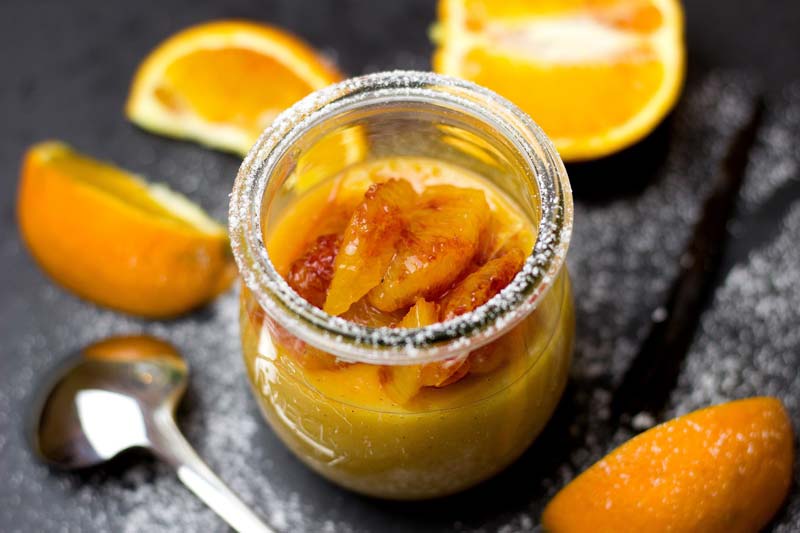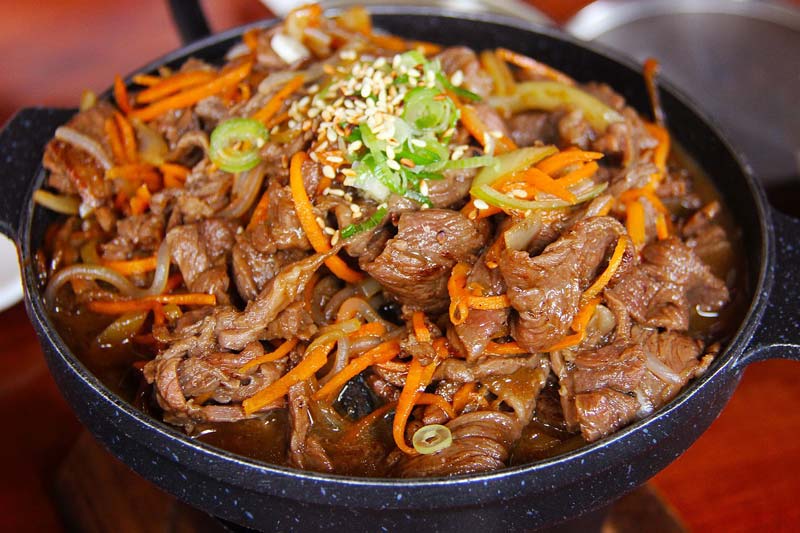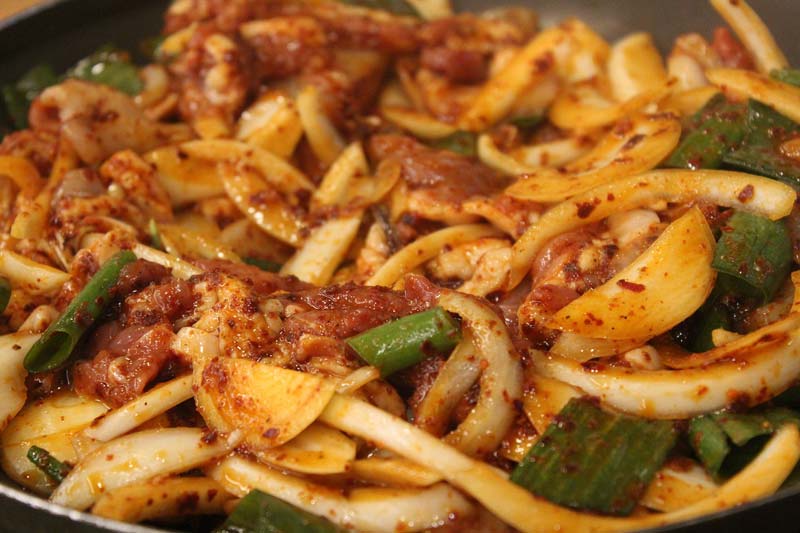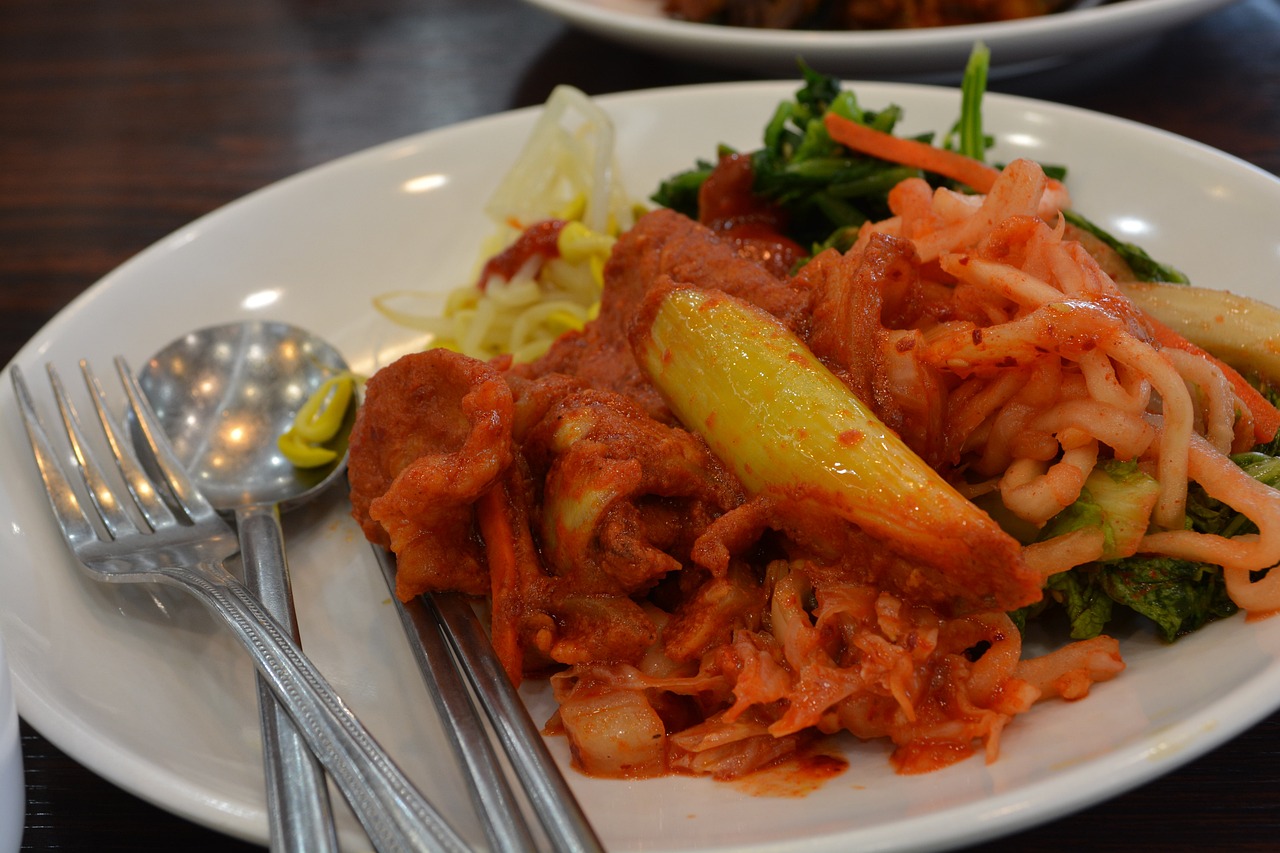Studies on Kimchi have been actively performed since the middle of 1990’s.
In Kimchi made recently, general bacteria propagate rapidly at the maximum rate of 10 times and again die out speedily. The reason is that the rapid propagation of bacteria makes carbon dioxide saturated where the bacteria cannot live anymore, so in that situation, only the lactic acid bacteria, the anaerobic microorganisms that can live without the air start their action in it. The lactic acid bacteria gradually ripen the Chinese cabbage or radish to be Kimchi as making lactic acid with sour taste. This situation allows only the lactic acid bacteria to be alive, and they make antibiotics called ‘Bacteriocin’ which stops the growth of other microorganisms.
The kinds of lactic acid bacteria exist differently according to the ripening degrees of Kimchi, so the lactic acid bacteria (cocci) exist in Kimchi ripened properly and the lactic acid bacteria (bacilli) exist mainly in Kimchi ripened more. The cocci produce several organic materials such as the lactic acid and ethanol in particular, and the bacilli generate mainly the lactic acid, so Kimchi getting sourer as it is ripened is resulted from the latter.
There exist one billion to ten billion lactic bacteria in 1㎖ of Kimchi at maximum. However, as the sour taste gets stronger, even the lactic bacteria cannot get used to it and die out, so at this time, yeast starts to propagate, which causes the stale smell in old Kimchi.
(fermentfood/fermentfood3_2.jsp)

